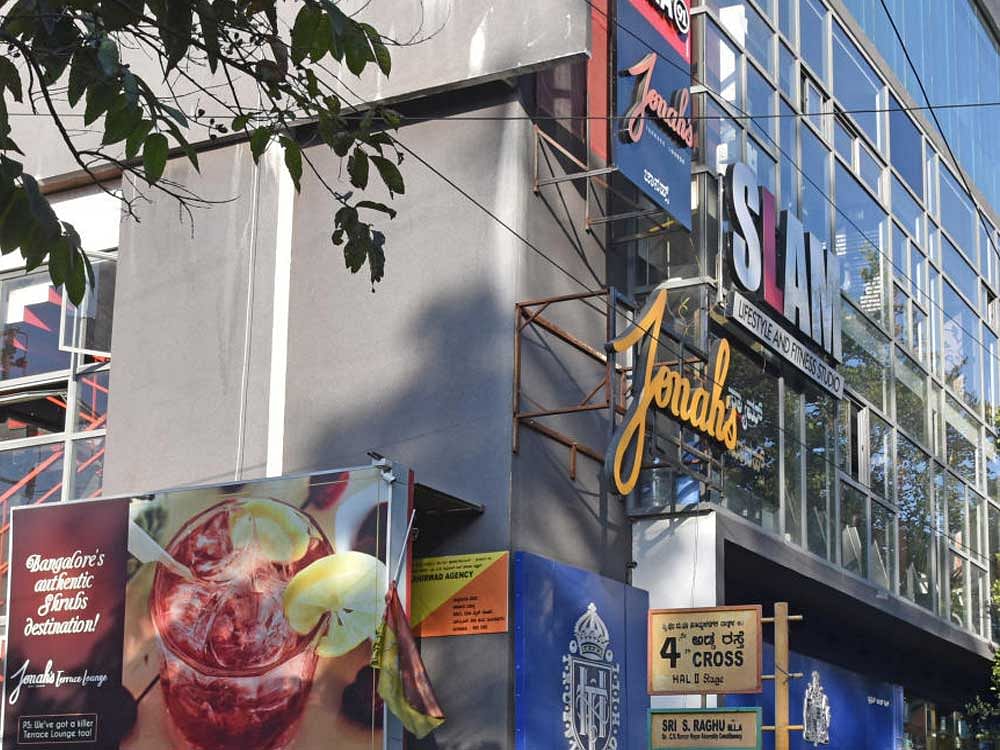
Structural design flaws can risk any life. But inside a pub, packed with people in an inebriated state, this could go fatally wrong. And this is exactly what happened when two youth slipped from a staircase and fell to their death on Church Street last week. Is a correction course in sight before the next fatal fall?
Tipsy, loud and carefree, the boisterous crowds trooping out of pubs across town need not be at their alert best. Isn’t this reason enough to keep safety nets robust as ever? Should dark, dingy staircases be the norm, as dangerous as poorly maintained elevators and parapet walls too short to get everyone edgy?
In Indiranagar and Koramangala, many buildings originally designed for residential purposes have morphed into pubs and restaurants. Such designs work well for limited, predictable numbers, not when the tipsy crowds invade every inch of space.
Who is responsible?
Who is to blame? The Bruhath Bengaluru Mahanagara Palike (BBMP) that issues trade licences, the builders, the pub owners or the Fire and Emergency Services? On their part, the pub owners have been jolted by the Church Street accident, and many expect the police and Palike to swoop down soon.
Install safety barriers. This is the directive the city police have now issued to all pubs. Most outlets have converted their rooftops into hangout extensions. Partying customers often prefer the open air ambience, and the railings they lean on are not exactly strong or tall enough.
To avoid accidents, the police have asked pubs to keep the railings / barriers six-foot high. Lifts and emergency exits should also be well-lit and well maintained. Since regulation of pubs is a multi-stakeholder task, the city police commissioner has proposed to call a meeting of all agencies involved.
Multi-agency supervision
Additional Commissioner of Police (East Zone), Seemanth Kumar Singh reasons that without the active involvement of every agency, a robust regulatory mechanism will be tough. “The BBMP, Fire Services, Excise Department.. It has to be an overall supervision by all departments. The Palike, for instance, issues No Objection Certificate. We’ll need to look into all these documents,” he explains.
The agencies, he adds, will have to meet regularly to share data and coordinate action. “Regular inspections to check violations are critical.”
Safety first has not been a preferred slogan for many in the pub business. Only after the fatal accident are demands being made to put up boards that clearly state the ‘Do’s and Don’t’s’ on safety procedures. The general laxity in inspections by regulating agencies has only pushed up the risk factors.
Additional railings
In pubs housed inside high-rise buildings, windows without grills are an invitation to danger. “Additional railings are a must, particularly on parapets. Preferably, pubs should be in an enclosed space. But if rooftops are a necessity, landscaping or potted plants can act as a buffer to ensure people don’t go near the parapets,” suggests Prof B S Jagadeesh Chandra from the Dayananda Sagar College of Architecture.
To maximize design and aesthetics, safety is often compromised. “But you can still have aesthetically pleasing design with safety glasses, wired glasses that don’t break. Yes, functionality and safety should be the priority,” he adds.
Urban architect Naresh Narasimhan laments the lack of standardized safety rules and strict enforcement even during the building construction phase. He notes, “Public safety is paramount. There should be clear safety specifications for public buildings. Most international clients are aware of that.”
Maintenance gaps
But even if all safety systems are in place, it could collapse without proper upkeep. “It is not just about design, but maintenance is critical. Seventy per cent of buildings have violations. For instance, Carlton Towers had fire exits, but they were all locked,” recalls Narasimhan.
Most building plans are good on paper, points out Udayan Vijayan, founder of the citizen’s collective on fire safety, Beyond Carlton. “Fire exits, access for fire tenders, everything will be there. But problem starts after a few years of occupation when such areas are encroached,” he explains.
Mounting accidents on highrises, residential or commercial, should have injected a sense of urgency in mandating safety guidelines. “This is particularly needed in crowded places such as pubs, where any incident of fire can trigger panic. People tend to get confused, unable to decide quickly where to run.”
Fire safety
The close proximity of kitchens and inflammable material to serving areas in pubs makes the entire system vulnerable to fire. Are the fire escapes clearly demarcated, are the staircases wide and well-lit, are sprinklers around? These are questions that turn extremely critical when pubs get crowded with people whose reflexes are slowed down.
But customers too should think responsibly about their safety, contends Danny Joseph, CEO and director of Extreme Sports Bar with outlets in Sarjapur Road and Marathahalli. “I understand that pub owners need to take all safety precautions. People get drunk and get high. Some sit on the edge. It is risky, they need to be more responsible,” he says.
How about installing signages to dissuade people from risky behaviour? Danny is not sure whether that would really work. “I have 12 house rules displayed for all customers to read. But how many of them read all that?” he wonders.
As public memory fades, will the lessons learnt from the recent pub accident be put on the backburner? Spurred by the police department, will inter-agency coordination finally add teeth and purpose to a robust regulatory mechanism? The coming months will be keenly watched.